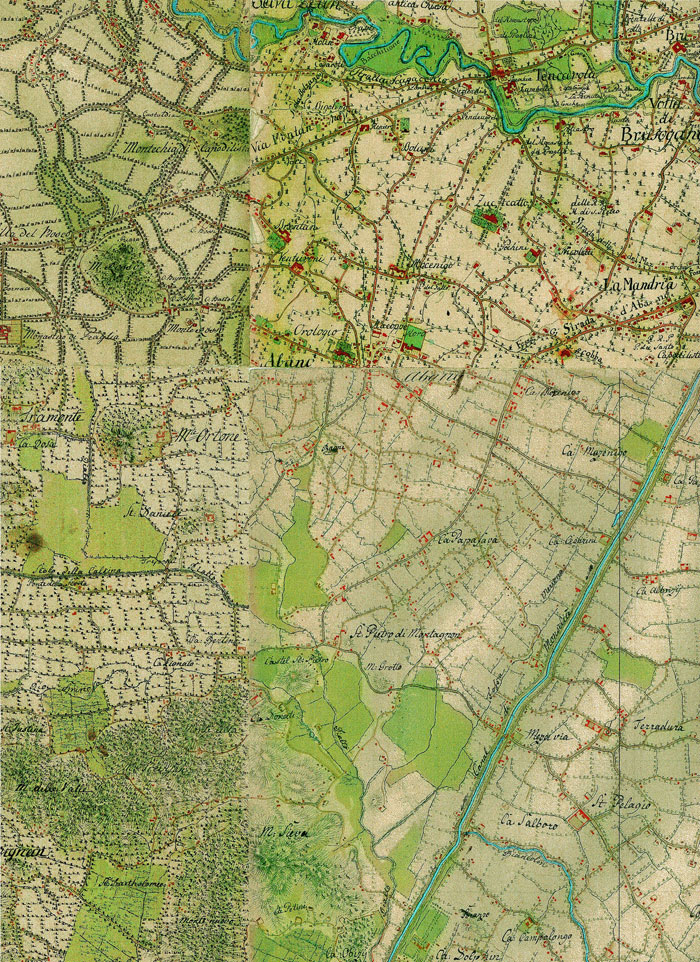Anthon von Zach, KRIEGSKARTE. TOPOGRAPHISCH-GEOMETRICHE KRIEGSKARTE VON DEM HERZOGTHUMS VENDIG (1798 – 1805)
Pen-and-watercolour drawing on paper – Scale 1:28.000 – Kriegs Archiv Wien, BVIIa 144 ,Sez. XI – 17
After the signing of the Campoformido Treaty (1797), the Venetian possessions passed under the rule of the Hapsburg, and the army staff officers charged the General Anton von Zach with the creation of a topographic large-scale map aimed at military purposes. The surveying was carried out from 1798 and 1805, and the final result was a very detailed and vast topographic map, the “Kriegskarte”, which became the war map of the Austrian Empire.
The document consists of one hundred and twenty tablets on a 1:28.800 scale, representing the physical elements and the toponymy of Venetian and Friulian territories from the left of the Adige river to the borders between Friuli and the Empire. 992 handwritten sheets with “military descriptions” are attached to the map: these sheets provide exhaustive information about lifestyle, economy and conditions of the population living in the areas concerned by the map at the beginning of the 19th century. The analysis of the map enables the knowledge of the geography and the hydrography of the surveyed territories in the historical moment of the passage from the Venetian rule to the dominion of the Hapsburg. The military function of the map justifies the very detailed information provided, crucial for the study of the territory before the big transformations of the 19th and 20th century.
The most recent reproduction of the “Krigskarte” can be found in: Kriegskarte, 1798-1805. Il Ducato di Venezia nella carta di Anton von Zach/Das Herzogtum Venedig auf der Karte Antons von Zach a cura di Massimo Rossi, Fondazione Benetton Studi Ricerche-Grafiche V. Bernardi (in collaborazione con Österreichisches Staatsarchiv Kriegsarchiv, Vienna) Treviso-Pieve di Soligo 2005.

CARTOGRAPHIC DOSSIER n°4
Gran Carta del Padovano della Reale Società delle Scienze e delle Lettere di Gottinga (1781)…
CARTOGRAPHIC DOSSIER n°6
Mappa del territorio di San Pietro Montagnone – Catasto Napoleonico (1810)…





